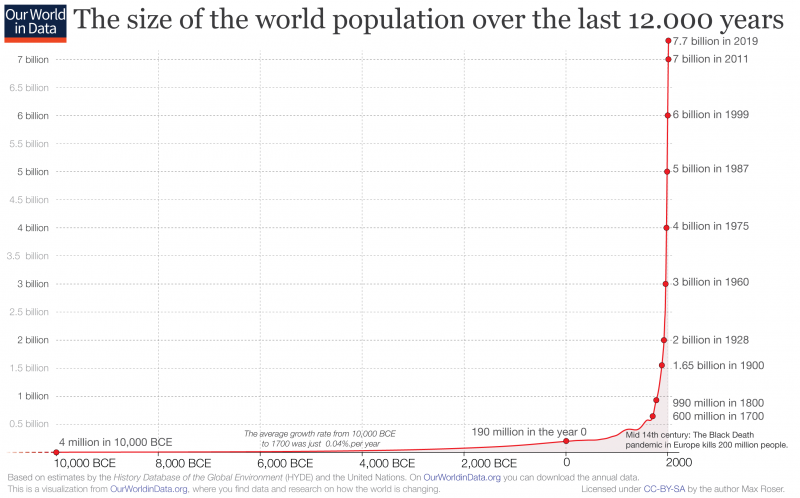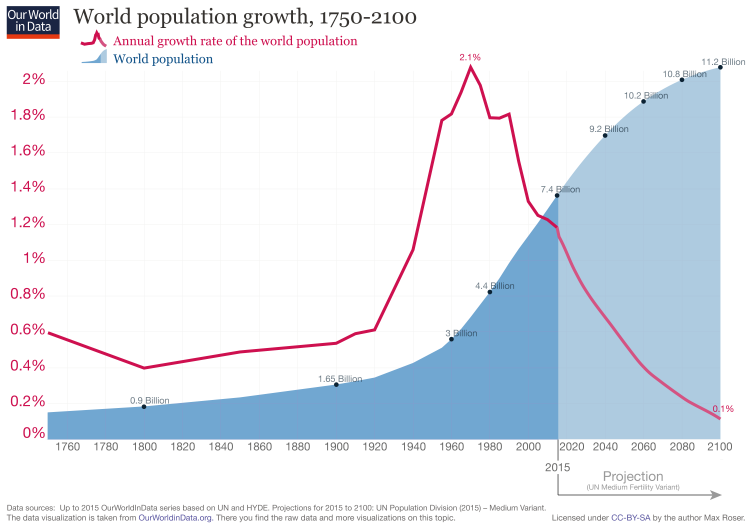Exponential Growth in World Population
Revised 2 December 2023
For 10,000 years the world population grew very slowly until 1800. The world population by then had reached almost one billion people. From then onwards, the rate of exponential growth increased.

Figure 1: Exponential Growth in World Population (Our World in Data 2021)
The doubling time of any entity which is growing exponentially is the time it takes to double in size. The doubling time is approximately 72 divided by the annual percentage rate of growth. For example, if a population is growing at an exponential rate of 2% per year, then the doubling time is 36 years.
In 1803, the world population was one billion people. By the end of 1927, the world population had grown to 2 billion people, a doubling time of 124 years. By 1975, the world population had grown to 4 billion people, a doubling time of 48 years. The most rapid growth rate in the world population occurred in the 1950s and 1960s peaking at 2.1% per year in 1971. From 1971 onwards, the world population growth rate started to decline. In recent years, we have been adding about 80 million people to the world population every year. The current world population in 2021 is 7.9 billion people (Our World in Data 2021). The United Nations Population Division expects the world population to level out at 10.9 billion by the end of this century.

Figure 2: World Population Growth 1750-2100 (Our World in Data 2021)